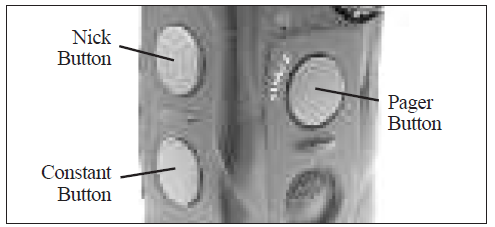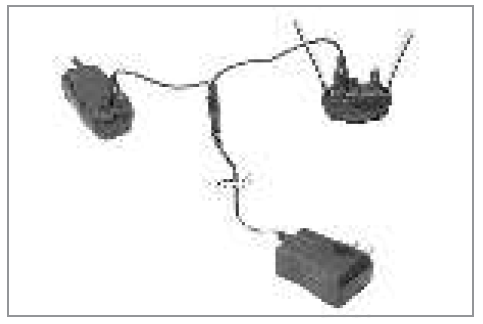Dogtra 200C Compact Training Collar

Product Safety and Health Statement
Proper e-collar useDogtra e-collars are intended for the sole purpose of behavior modification of dogs. They are NOT intended for human use or use on other animals. Dogtra Company does not assume any liability for the improper use of a Dogtra e-collar.
Aggressive dogsDogtra highly recommends consulting a dog training professional when using an e-collar to correct dogs that are aggressive towards other dogs or people.
Interference with other electronic devicesDogtra’s industry-leading technology filtering system ensures minimal interference with other electronic devices (garage door openers, mobile phones, etc.). Our digital microprocessor offers thousands of unique codes to eliminate frequency match-up with other Dogtra e-collars. Dogtra recommends consulting your physician if you are going to use the e-collar and you have any type of medical devices.
Inadvertent activationIf the constant button is held down for 12 seconds or more, the unit will automatically shut down. It reactivates when the button is released and depressed again.
Proper FitA loose fit can allow the receiver/collar to move around on the dog’s neck. When this happens, the contact points may rub the skin and cause irritation. If the unit is too loose, the contact points will not make proper contact and your dog will not receive consistent stimulation.
Duration your dog can wear the unitLeaving the receiver/collar in the same location on the dog’s neck for an extended period of time can cause skin irritation. If the dog is to wear the e-collar for long periods, occasionally reposition the receiver/collar so that the contact points are moved to a different location on the dog’s neck. Make sure you check for skin irritation each time you use the unit. If your dog exhibits signs of skin irritation, consult with a veterinarian.
Reaction to the stimulationEvery dog has a different tolerance and reaction to the stimulation. Please look at your dog’s reaction to find just the right level of stimulation. The stimulation level may vary depending on the situation and distractions. Normally a distracted dog (chasing another dog, squirrel, etc.) will require a higher level of stimulation compared to when there is no distraction.
Training MethodsE-collars can be used with many different methods. If you have any concerns in the training methods provided by Dogtra, consult with a dog training professional.
At a Glance

Optional accessories
Belt clipA belt clip is available for the handheld transmitter.
Field auto chargerDogtra’s field auto chargers are designed for use with a 5-volt car outlet.
European chargerDogtra’s European chargers are designed for use with a 230V AC electrical outlet.To purchase accessories, please visit www.dogtra.com or call customer service at 1-888-811-9111.
Main Features of the 200C
- Rheostat/Volume Dial with Stimulation Levels 0-100
- Reduced Size Receiver
- 1-Handed Operation
- Non-Stimulating High Performance Pager
- Enhanced Contact Points
- Fully Waterproof
- 2-Hour Rapid Charge Batteries
- Nick and Constant Stimulation
- 1/2-Mile Range
- For Dogs as Small as 10 lbs.
- Low to Medium Power Stimulation
Overview
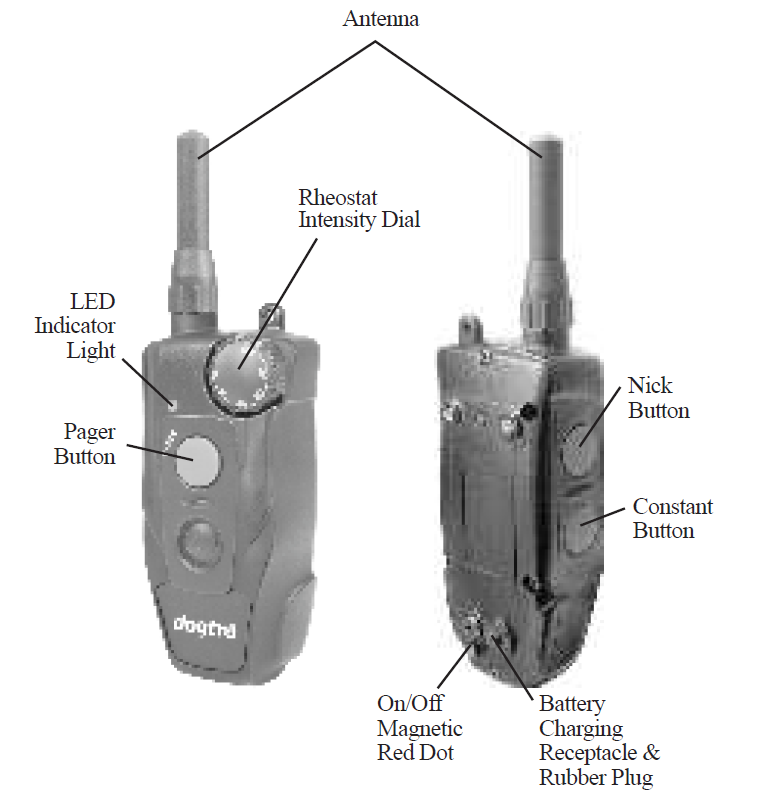
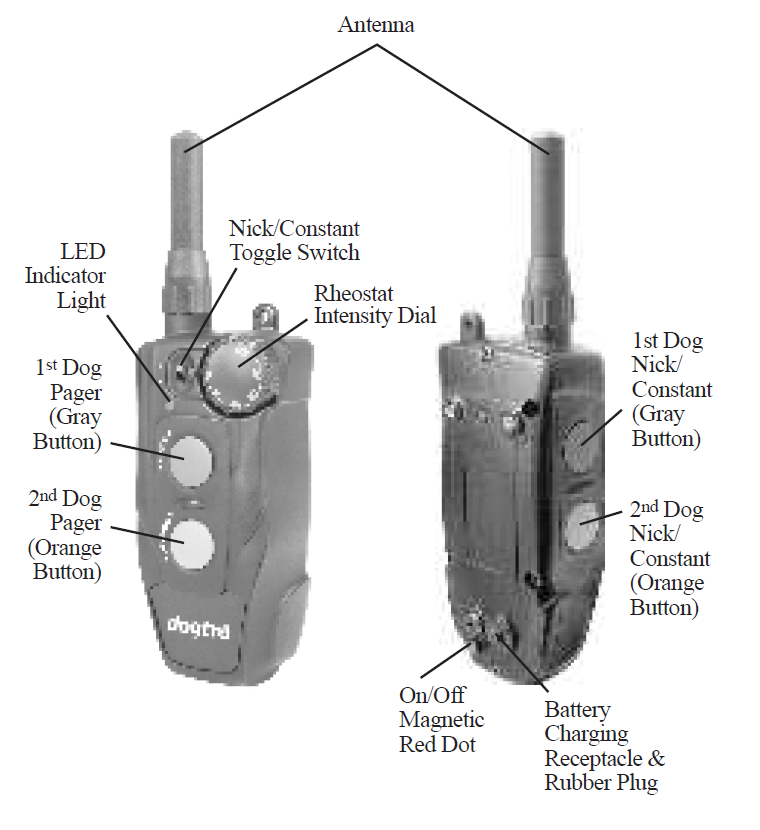
Receiver/Collar
Understanding Your Training System
- How to Turn the 200C On/Off
 To activate the receiver/collar, place the red dot on the back of the transmitter to the red dot on the receiver/collar. Hold the two red dots together for a moment until the LED light on the receiver/collar comes on.To deactivate the unit, repeat the same procedure holding the two red dots together momentarily. The LED light will turn red for a brief moment indicating that the receiver/collar is now shut off.The transmitter does not have an on/off switch, and it will only activate when buttons are pressed.
To activate the receiver/collar, place the red dot on the back of the transmitter to the red dot on the receiver/collar. Hold the two red dots together for a moment until the LED light on the receiver/collar comes on.To deactivate the unit, repeat the same procedure holding the two red dots together momentarily. The LED light will turn red for a brief moment indicating that the receiver/collar is now shut off.The transmitter does not have an on/off switch, and it will only activate when buttons are pressed. - How the Transmitter Buttons Work200CThe transmitter for the 200C single dog unit has three buttons (one on the face of the transmitter, and two on the left side).

The “Nick” button is located on top on the left side of the handheld transmitter. When the “Nick” button is pressed the receiver emits a single pulse of electrical stimulation.
The “Constant” button is located on the bottom on the left side of the handheld transmitter. Pressing the “Constant” button gives continuous stimulation as long as the button is pushed, for up to 12 seconds. If the button is not released after 12 seconds, the stimulation will automatically turn off as a safety feature. The collar will be ready to be reactivated once the button has been released.
The “Pager” button is located on the face of the transmitter. Pressing it will give non-stimulating vibration as long as the button is depressed, for up to 12 seconds.
202C
The 202C two-dog unit has four buttons and a toggle switch on the transmitter (two on the face of the transmitter, and two on the left side).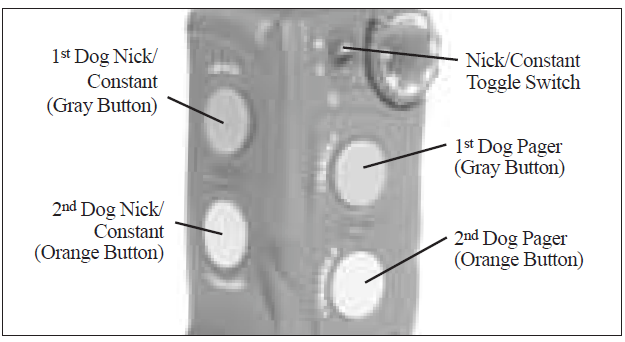
Nick & Constant Toggle Switch
Located on the face of the transmitter is a toggle switch. The toggle switch has a setting for “Nick” and another for “Constant”. The color-coordinated buttons (orange for the orange receiver/collar and gray for the black receiver/collar) will implement the desired stimulation based on the toggle switch setting.
When either the orange or gray stimulation button is pressed and the toggle is set on “Nick” the receiver emits a single pulse of electrical stimulation. When you press either the orange or gray stimulation button, and the toggle is set on “Constant”, the receiver emits a continuous stimulation as long as the button is pushed, for up to 12 seconds to the corresponding collar. If the button is not released after 12 seconds, the stimulation will automatically turn off as a safety feature. The collar will be ready to be reactivated once the button has been released.
The Pager buttons are located on the face of the transmitter.The orange button corresponds with the orange receiver/collar and the gray with the black receiver/collar. Pressing it will give non-stimulating vibration as long as the button is depressed, for up to 12 seconds.
Collar Fitting
The receiver/collar should be fitted so that the surgical stainless steel contact points press firmly against the dog’s skin. When properly fitted, you should be able to fit a finger or two snugly in between the contact points and your dog’s skin. When properly fitted, the receiver/collar should not move on the dog. The best location for the receiver/collar box is either side of the dog’s windpipe.
A loose fit can allow the receiver/collar to move around on the dog’s neck. When this happens, the contact points may rub the skin and cause irritation. If the receiver/collar is too tight, the dogs may have difficulty breathing.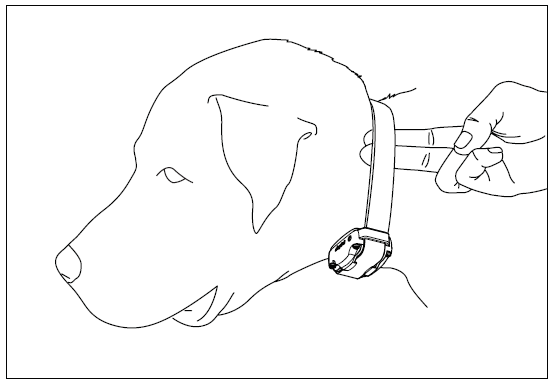
How to Find the Right Stimulation
The 200C comes with the rheostat dial on the transmitter. The rheostat intensity dial controls the stimulation level, with level 0 being the lowest level and level 100 being the highest. The level of stimulation best suited for your dog depends on your dog’s temperament and threshold for stimulation. Always start at the lowest level and work your way up. The appropriate level can be found when the dog responds to the stimulation with a mild reaction, such as a tensing of the neck muscles. The stimulation level may vary depending on the training situation. When highly distracted, dogs will require a higher level of stimulation.NOTE : The stimulation intensity can be adjusted even while the stimulation is in use.
To Maximize the Distance
The 200C has a 1/2-mile range. The range may vary depending on the way the transmitter is held. Hold the transmitter away from your body to receive the greatest range. For maximum signal strength, keep the 200C properly charged.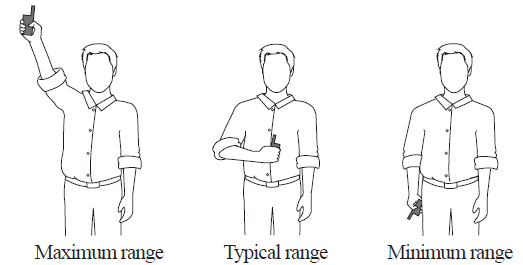
*Avoid touching the antenna or the range may decrease substantially.
The LED Indicator
The LED indicator flashes every 4 seconds when the receiver is on and ready for use. The LED indicator will blink on both the transmitter and the receiver when the transmitter buttons are pressed.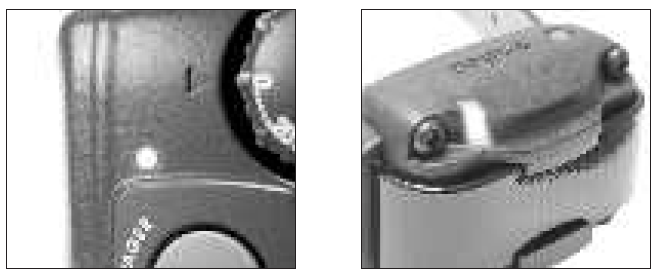
The LED indicator color indicates the battery life level.Green = Fully charged,Amber = Medium,Red = Needs chargingIf the unit is used while the LED indicator is red, it will shut down automatically.
Receiver Indicator LightWhen the “Constant” button on the transmitter is pushed, the collar indicator light will glow steadily (either green, amber, or red based on the remaining battery life), as long as you hold the button down, for up to 12 seconds. When the “Nick” button is pushed, the light comes on for a fraction of a second.
Charging the Battery
The Dogtra 200C uses Lithium-Polymer batteries:
- Charge the unit before using the unit for the first time.
- Do not charge the batteries near any flammable substances.
- Fully charge the batteries if the unit is to be stored without use for a period of 3 months or more.
Recharge the unit if :
- The indicator light on the collar is emitting a red color.
- The indicator light on the transmitter or receiver will not come on. The indicator light on the transmitter or receiver comes on momentarily, but will not stay on when the “Constant” button is pushed.
Battery Charging Procedure:
NOTE : The unit has a partial charge when it leaves the Dogtra facility, upon receipt of the collar, be sure to give it a full 2-hour initial charge before the first use.
- Attach the charging cables to both the transmitter and receiver(s), as shown on page 16.
- Plug the charger into a 120-volt wall outlet or if using the accessory field charger, plug into a cigarette lighter only for Lithium-Polymer batteries (use a 230-volt European charger for Europe). When properly plugged in, all indicator lights should glow red. During the charging process, the unit will shut off. Once the battery cable is unplugged from the unit after a full charge, you will need to turn the unit on again before use.
- The Lithium-Polymer battery is fully charged within 2 hours. The lights will stay red during the charging process. The red light will change into a steady green light when the battery is fully charged (when you disconnect the charger after finishing the charge, you will need to restart the unit).
- After charging, cover the battery charging receptacles with the rubber plugs on the transmitter and receiver/collar.NOTE : Only use Dogtra-approved batteries, chargers, and accessories for your Dogtra e-collars. When a charger is not in use, disconnect it from the power source.
General Training Tips
Getting started with your 200C: Your dog must know some very basic obedience commands before beginning training with the 200C. A dog learns by first being shown a command, followed by lots of repetition over an extended period. As the dog becomes proficient at these commands, the trainer can introduce distractions and different locations to strengthen them. Throw in the correct amount of positive and negative reinforcement and you should end up with a well-mannered dog.
Obedience training on the leashYour dog must fully understand the obedience commands (sit, stay, here, heel and kennel) before using the e-collar for reinforcement of these commands. A leash attached to a standard collar is used to “teach” the dog the basic obedience commands (here, heel, sit, and stay). A tug on the leash/collar is used to reinforce the command. When the dog complies with the command, use positive reinforcement/praise. Once the dog understands these commands, the e-collar can be used to reinforce them.
Beginning e-collar trainingWhen you feel your dog understands the obedience commands on the leash we can now start with the electric collar training. With the dog on the leash wearing the electric collar continue with your obedience drills. Light stimulation (nick or constant) is going to be applied as a command is given, the stimulation is removed as the dog complies. Through repetition, a dog learns to turn off the light stimulation by performing the command. E-collar training is another form of negative reinforcement, similar to the leash and standard collar training. When the dog complies with the command, we use praise/positivereinforcement.The final step is the avoidance phase in which the dog learns that he can avoid the stimulation altogether by performing your commands. When these training procedures are complete, the electric collar is used as a reminder when the dog does not comply with your commands at home or in the field. Keep your initial training sessions short and positive.Dogs have a short attention span, especially young dogs.
How much stimulation to useAlways start with low levels of stimulation and work your way up depending on the disposition of your dog and any given situation. By using only enough stimulation to get your point across, you will have a more controllable environment and a dog that is under less stress. Animals (and humans) perform better in a less stressful environment.For more training information, please visit our website at www.dogtra.com
Maintenance
Basic maintenanceBe sure the rubber-charging cap is securely in place when the collar is in use. After each training session, carefully inspect the unit for any missing parts or damage to the casing. Damaged or broken casing may affect the waterproof guarantee on the unit. After confirming that there is no damage to the casing, rinse the receiver/collar and clean out any dirt or debris.
Storage maintenanceThe 200C should be fully charged before storing for extended periods. While in storage, the unit should be given a full charge once a month, and before the first use. Store the units in room temperature. Do not keep the units exposed to extreme climates.
TroubleshootingIf the unit is malfunctioning, please refer to the “Troubleshooting Guide” before sending it to Dogtra for service. If you have any questions or concerns, you may email them to , or call customer service at 1-888-811-9111.
Troubleshooting Guide
- My dog is not reacting to the collar.
- Make sure the receiver/collar is turned on.
- Be sure the strap is on the dog tight enough so that both contact points are touching the dog’s skin.
- The contact points may be too short for your dog’s thick or long coat. To place an order for longer contact points, please contact Dogtra or a Dogtra dealer. If you are already using longer contact points, you may need to trim the hair on the dog’s neck, so that both contact points are touching the dog’s skin.
- The intensity level may be too low for your dog. Increase the stimulation until the dog responds, usually by a neck movement, head shaking, or looking over the shoulders. The response may be very subtle.
- The LED indicator light comes on, but I do not feel any stimulation.
- Your tolerance may be higher than your dog’s. You may need to try the unit on your fingertips where sensitivity is higher and/or increase the stimulation level. Be sure both contact points are touching both of your fingertips.
- The battery may be low, check the LED indicator light on the transmitter and receiver/collar for battery life.
- If you have a full charge, and you have done all of the above, your unit may need to be serviced. Please email us at , or call customer service at 1-888-811-9111
- The transmitter has no range, or the stimulation is weaker when my dog is farther away.
- Check to see if your fingers are touching the antenna, as the range may decrease substantially.
- The range indicated on the unit’s box is for flat terrain (line of sight). Heavy brush, trees, hills, buildings, and/or moisture will affect the range of your unit. For the best range, hold the transmitter vertically above your head, and/or try moving to higher ground.
- Any electrical conductors will affect the range, such as cars, chain-link dog runs, metal buildings, and radio towers. For the best results, operate away from these structures.
- My units are not holding a charge.
- The charging pin may be damaged. A metal pin inside the charging port should stand straight up and firm in the center. If the pin is wobbly, broken or missing, you will need to send the unit in to the repairs department.
- The charging port must be clean prior to charging, clean out any dirt with a cotton swab and some rubbing alcohol. If your dog was in salt-water, be sure to rinse the receiver and charging port with clean water.
- For Dogtra units over two years old from the purchase date, the batteries may need to be replaced. You can replace them yourself by contacting Dogtra for a replacement battery. Damages incurred to the unit due to improper battery installations are not covered under the warranty. Dogtra strongly recommends sending the unit in for inspection.
- My dog has skin irritation.
- This may be due to an improper fit or from wearing the unit too long. If your dog exhibits signs of skin irritation, consult with a veterinarian. Once the dog’s skin returns to a normal condition, continue to use the collar and check your dog’s neck each time you use the unit.
WARRANTY AND REPAIR INFORMATION
2-Year Limited Lifetime Warranty
Dogtra Company provides the original purchaser with a 2-YEAR WARRANTY for the 175NCP, 180NCP, 200NCP Gold/C Series, 210NCP Series, 280NCP/C Series, 300M Series, 1400NCP Series, 1500NCP Series, 1600NCP Series, 1700NCP Series, 1800NC Series, 1900NCP/S Series, 2000T&B Series, 2200NCP Series, 2300NCP Series, 2500T&B Series, 3500NCP Series, SureStim Series, ARC Series, and the EDGE RT. The warranty begins from the date of purchase. For the first two years, coverage is for both Parts and Labor on warranty repair services.
Accessories such as chargers, splitter cables, antennas, straps, and batteries are covered for the first year only. After the first two years, the Limited Lifetime Warranty covers Parts only and does not cover Labor Fees and Accessories. All Shipping fees incurred, the cost of Accessories after the first year, and Labor fees associated with out of warranty repair work, are the customer’s responsibility. Labor fees will be variable depending on the extent of the work required. The Limited Lifetime Warranty expires 5 years after a model is discontinued from production by Dogtra.
To Qualify for the Dogtra Warranty
All products must be registered and/or a proof of purchase is required to initiate repair work under warranty. To register your Dogtra product, log onto our website at www.dogtra.com, click on the warranty registration link, and fill out the required information.
Registration must be completed within 30 days of purchase. If you do not have access to a computer, you can call our toll free number at 1-888-811-9111, and one of our customer service representatives will register the product for you. If you were unable to register your product within 30 days of purchase, we will accept all products for repair with a proof of purchase. We strongly recommend keeping the original receipt. If your product is not registered and a proof of purchase is not available at the time of service, Dogtra will estimate the age of the unit by the serial number. Serial number estimates can differ from the actual purchase date. A serial number estimate is the only method of determining an approximate date of purchase without product registration or a proof of purchase.
Not Covered Under Warranty
Dogtra DOES NOT offer warranty for products that have been bought secondhand or as a resold product. Dogtra DOES NOT replace defective units or provide refunds for products purchasedfrom us after 30 days from the date of purchase. Dogtra DOES NOT cover the cost of shipping outside of the Continental United States.Issues of replacement and refunds on units purchased less than 30 days from an authorized dealer must be addressed to the dealer directly. If the products purchased from an authorized dealer are after 30 days from the date of purchase, please send the units to Dogtra for service and repair.
Dogtra DOES NOT cover the cost of repairs and replacements due to misuse by the owner or dog, improper maintenance, and/or lost units. Any water damage on the Water Resistant Transmitters of the 175NCP, 180NCP, 200NCP Series, 1400NCP Series, 1500NCP Series, and iQ Pet Series, and the Water Resistant Receivers of the RRS, RRD, and RR Deluxe, will not be covered. All replacement costs for either the transmitter or receiver will be the owner’s responsibility.
The warranty is void if the unit has been altered or an unauthorized person has damaged the unit while attempting repair work. Battery replacement by the customer during the first year of the 2-year Limited LifetimeWarranty is not recommended. If the customer chooses to replace the batteries, any damage to the unit during the change-out by the owner will void the warranty. The removal of serial numbers from any Dogtra products will void the warranty. Dogtra reserves the right to retain and discard any parts or accessories that have been found damaged upon replacement and repair.
Procedure for Repair WorkIf the unit is malfunctioning, please refer to the “Troubleshooting Guide” in the Owner’s Manual and call customer service at 1-888-811-9111, for technical support, before sending it to Dogtra for Service.The cost of shipping products under warranty back to Dogtra is the customer’s responsibility. Dogtra is not responsible for units damaged or lost in transition to Dogtra. Dogtra is not responsible for loss of training time or inconvenience while the unit is in for repair work. Dogtra does not provide loaner units or any form of compensation during the repair period.
A copy of the sales receipt showing the purchase date may be required before warranty work is initiated. Please include a brief explanation outlining the problem and include your name, address,city/state/zip code, daytime phone number, evening phone number, and email address. Or you can visit our website at www.dogtra.com for a service request form. If the repair costs are not covered under warranty, we will call you for payment information and authorization. For any questions concerning your Dogtra products, call us toll free at1-888-811-9111, M-F 8:30AM – 4:00PM, Pacific Standard Time, or email us at [email protected] dogtra.com for specific repair inquiries.Send repair units to :Dogtra Company / Repairs22912 Lockness Avenue,Torrance, CA 90501U.S.A.The diagrams and representations in the manual may differ slightly from the actual product depending on the model type.
References
[xyz-ips snippet=”download-snippet”]

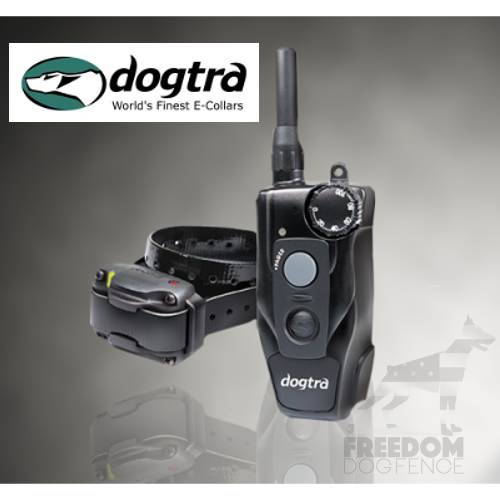

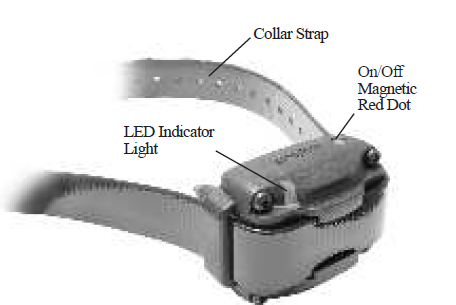
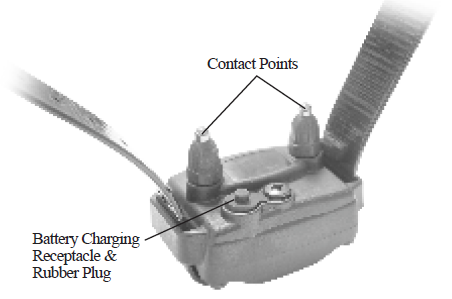
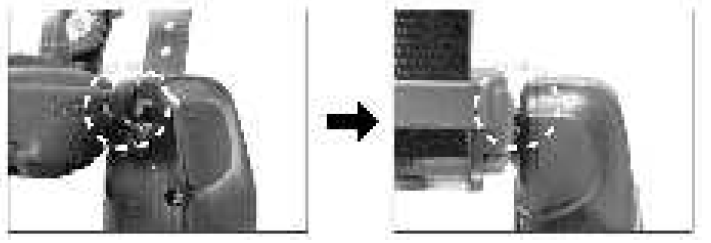 To activate the receiver/collar, place the red dot on the back of the transmitter to the red dot on the receiver/collar. Hold the two red dots together for a moment until the LED light on the receiver/collar comes on.To deactivate the unit, repeat the same procedure holding the two red dots together momentarily. The LED light will turn red for a brief moment indicating that the receiver/collar is now shut off.The transmitter does not have an on/off switch, and it will only activate when buttons are pressed.
To activate the receiver/collar, place the red dot on the back of the transmitter to the red dot on the receiver/collar. Hold the two red dots together for a moment until the LED light on the receiver/collar comes on.To deactivate the unit, repeat the same procedure holding the two red dots together momentarily. The LED light will turn red for a brief moment indicating that the receiver/collar is now shut off.The transmitter does not have an on/off switch, and it will only activate when buttons are pressed.